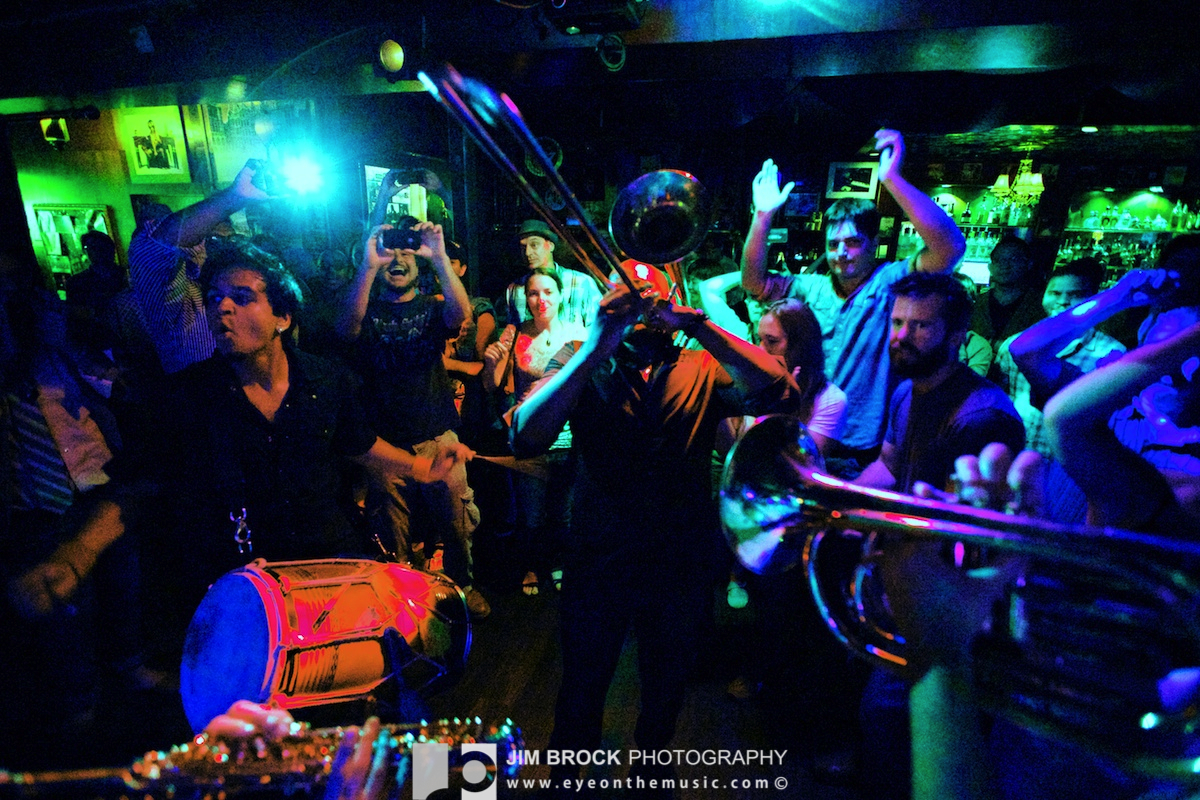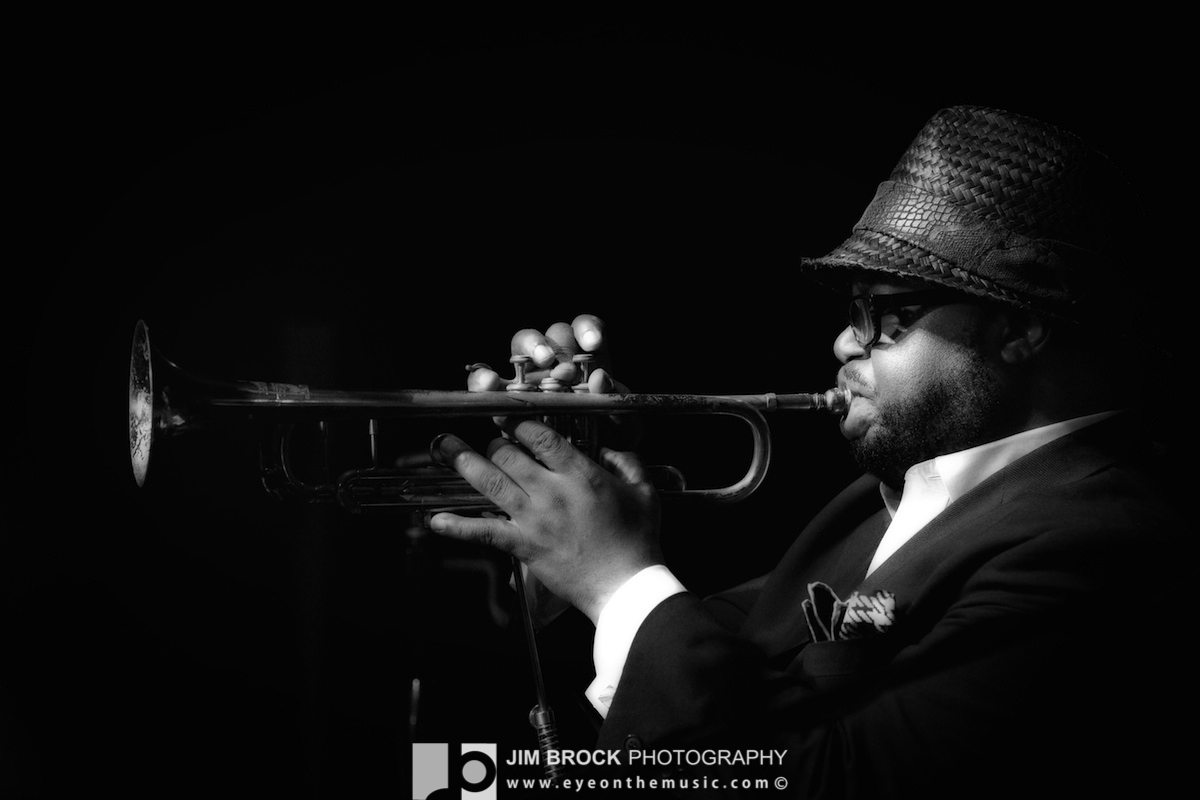Since I last caught up with Red Baraat in February, the self-described “Brooklyn dhol’n’brass” (by way of a second line) outfit has been to the White House, played Bonnaroo and High Sierra, performed at the TED conference, toured Europe and the UK, and returned to Hardly Strictly Bluegrass this weekend. This is a busy group of guys with over 100 dates this year.
One listen and the attraction of the east-meets-west meets stomp-on-your-face swing and brass is obvious. No surprise they get around because there is nothing that comes close to what they do and their musical imprint is rather indelible. I’m not saying that Red Baraat will bring us world peace, but its totally infectious sound and ‘tude, may just get us a little closer.
I extolled the band’s virtues when they played the Mint earlier this year and in my limited vocabulary, attempted to describe my take to the uninitiated. I’m happy to be coming back so soon. The fundamentals bear repeating, though. Traditional Hindi percussion led by singer/dhol player Sunny Jain backed by ridiculous brass including sousaphone, trumpet, bass trumpet, soprano sax and trombone, as well as a trap kit and percussion. On paper, a total head scratcher. The frenzy of Hindi wedding music jumps on NOLA horns and funk. Really?

As Sunny Jain shared with me after the show, there is an Indian brass tradition that came with British colonialism and the relationship to NOLA horns is not as far fetched as it sounds. In fact, Jain likened it to “cousin brothers”. His vision of tapping that unlikely cross-cultural connection beginning as a child when he first encountered the two-headed Indian drum known as a dhol, an instrument at the heart of Bhangra music. Flash forward to years as a jazz drummer and the road to the only Brooklyn Dhol’n’Brass group I know was shaped.
The set began with rich horns layered over swaggering loping rhythms that so characterize the Red Baraat feel and featured some fine soprano work by Lynn Ligammari (sitting in for Alex Hamlin) intertwining with Sonny Singh’s trumpet, Ernest Stuart’s trombone and MiWi La Lupa’s bass trumpet. Three tunes in and the show had the feeling of a mass seduction.
It was impossible not to groove with the bottom, your head following the horns wherever they led and Ben Stapp’s sousaphone (sitting in for Joe Alteiri) a constant reminder that the Mississippi doesn’t flow far from the Ganges. “Chaal Baby” (from the 2010 release of the same name) drove that point home with horn lines and a driving rhythm that wouldn’t sound out of place coming from Trombone Shorty and Orleans Avenue. Arms up and “hey ho-ing” one minute, buried under an avalanche of percussion (courtesy of Jain, drummer Tomas Fujiwara and percussionist Rohin Khemani) the next.

The hurry up pace of “Tunak Tunak Tun” (also from Chaal Baby) played like an unstoppable marching band cranked on something wickedly potent, then brought the band to its knees (literally), making sure we all “bowed down to the sousaphone”. The next tune went another way, with a mystical intro taking flight under Ligammari’s soprano and a dance floor of inward looking souls, only to swing hard in no time. “Aazzaadee Aazzaadee” the Punjabi word for freedom (if my transliteration is correct) was more Frenchmen Street funk than hot curry (Sonny Singh grabbing it good). “Shruggi Ji” (from their forthcoming release of the same name) started with jazz funeral horns morphing into a hefty mix of shake your shoulders, swing your hips, sousaphone driven horns and rhythm. Before the night was out, Red Baraat took to the floor with undeniable gravity and the rest of us were just helpless satellites. A damn cool moment if there ever was one.
As we bonded at the bar, Sunny Jain kept coming back to music as community, how it is embedded in eastern society and shares a common pull with the pulse of New Orleans. Cousin brothers to the end. Aren’t we all?























